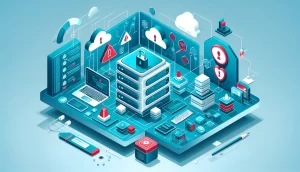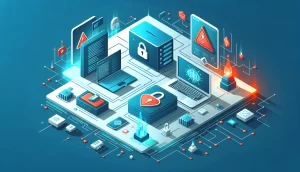What is DevSecOps? Understanding Its Role and Benefits
DevSecOps is a modern approach that integrates development, security, and operations into a unified framework for secure, fast software delivery. Building upon the foundations of DevOps and SecOps, DevSecOps emphasizes the shared responsibility of all team members to embed security practices seamlessly throughout the software development lifecycle (SDLC).
The Evolution from DevOps to DevSecOps
Traditional software development followed the waterfall model, characterized by lengthy, discrete phases: analysis, design, development, testing, and deployment. This approach created silos among development, operations, and security teams, often causing delays and security to be addressed late in the process.
With the rise of agile methodologies, software is developed and released rapidly—sometimes daily. This rapid pace demands automation and continuous integration/continuous delivery (CI/CD) pipelines to streamline build, test, and deployment processes. DevOps emerged to improve collaboration between development and operations, automating deployments and tests, but typically without integrating security rigorously into these processes.
DevSecOps evolved to fill this critical gap by embedding security practices early and throughout the pipeline, a concept commonly called “shift-left” security. This approach reduces vulnerabilities and ensures compliance without slowing down agility.
Core Principles of DevSecOps
Effective DevSecOps implementation revolves around several key principles:
- Security as Code: Security policies, controls, and tests are integrated into the CI/CD pipeline as automated scripts and tools.
- Shared Responsibility: All stakeholders, including developers, operations, and security teams, jointly own security outcomes.
- Early Detection: Vulnerabilities and risks are identified as early as possible in development, minimizing costly fixes later.
- Automation: Security scans, compliance checks, and testing are automated to sustain agile workflows.
Why DevSecOps Matters in Today’s Cybersecurity Landscape
In 2023, the average cost of a data breach reached $4.45 million globally, according to IBM’s Cost of a Data Breach Report. With software vulnerabilities accounting for a significant portion of breaches, integrating security directly into the development pipeline has become paramount.
Additionally, Gartner predicts that by 2026, organizations adopting DevSecOps practices will reduce security incidents related to application vulnerabilities by over 30%. These statistics highlight that DevSecOps is not merely a theoretical concept but a practical necessity to mitigate growing cybersecurity threats efficiently.
DevSecOps in Action: Tools and Techniques
Not all tools fit smoothly into a DevSecOps pipeline. Below are categories of security tools relevant to DevSecOps for web applications, APIs, and microservices:
Tools Less Suited for DevSecOps Pipelines
- Web Application Firewalls (WAFs): Tools like ModSecurity provide runtime protection in production but do not assist in automating security during development or testing phases.
- Manual Penetration Testing Tools: Tools such as Metasploit or Kali Linux are valuable for exploratory security testing but are impractical for automated CI/CD integration.
- Basic Web Vulnerability Scanners: Many scanners lack CI/CD integration capabilities and cannot provide continuous security assessments within pipelines.
Recommended DevSecOps Security Tools
- Static Application Security Testing (SAST): This approach analyzes source code early in development. While it helps detect coding errors, SAST often produces false positives and cannot detect runtime or configuration issues.
- Dynamic Application Security Testing (DAST): DAST examines running applications to find vulnerabilities missed in code review. Modern DAST tools integrate with CI/CD, facilitating automated testing post-build, though they may lack precise vulnerability localization in code.
- Interactive Application Security Testing (IAST): IAST combines the strengths of SAST and DAST by instrumenting applications during runtime to pinpoint vulnerabilities accurately. According to a 2022 study by Forrester, organizations deploying IAST experienced a 20% faster remediation rate for security flaws.
Integrating DevSecOps: Best Practices
- Embed Security Early: Incorporate SAST tools into pre-commit or build stages to identify issues during coding.
- Automate Security Testing: Use DAST and IAST scans as part of automated CI/CD pipelines to ensure continuous protection.
- Foster Collaboration: Encourage communication between developers, security, and operations teams through shared dashboards and integrated workflows.
- Track and Measure: Implement metrics such as mean time to detect (MTTD) and mean time to remediate (MTTR) to monitor improvement.
Conclusion
DevSecOps represents the natural progression of DevOps, emphasizing holistic security integration to empower organizations to deliver secure software rapidly. By adopting core principles such as shared responsibility, early detection, and automation, companies can significantly reduce security risks and maintain agility in fast-paced development environments.
As cyber threats continue to evolve, embracing DevSecOps practices backed by advanced tools like IAST ensures that security becomes a foundational element—not an afterthought—in software development.



